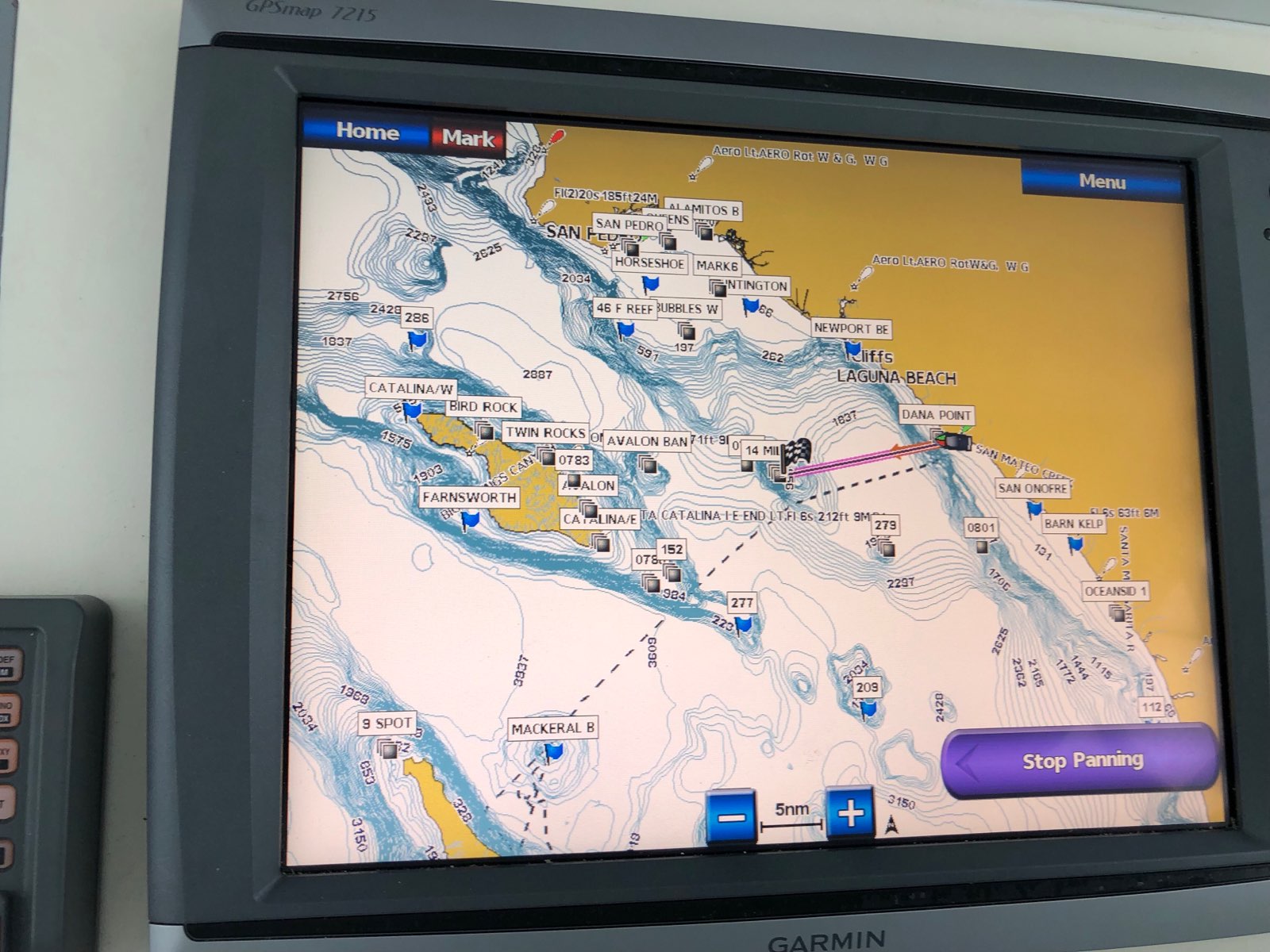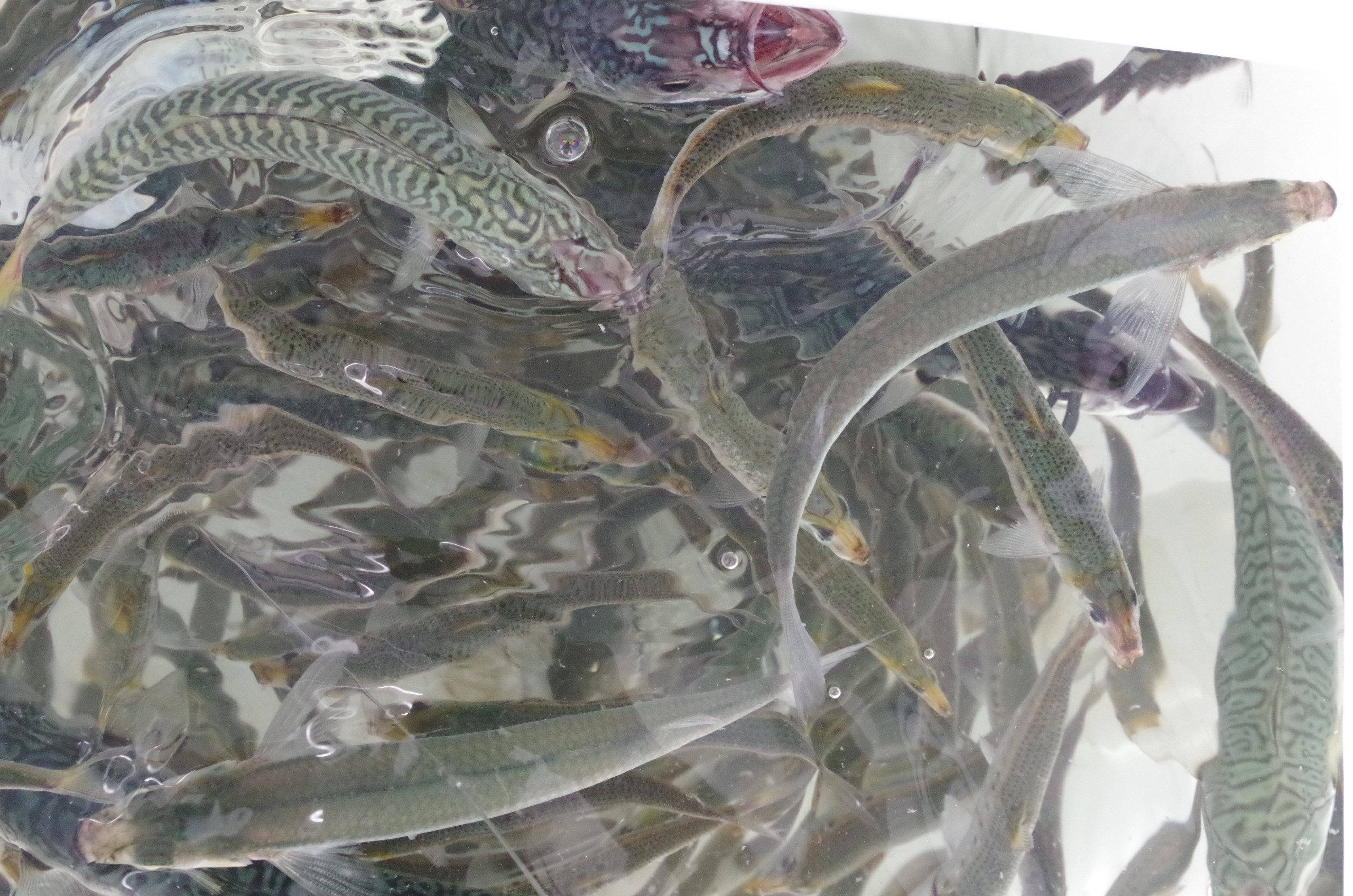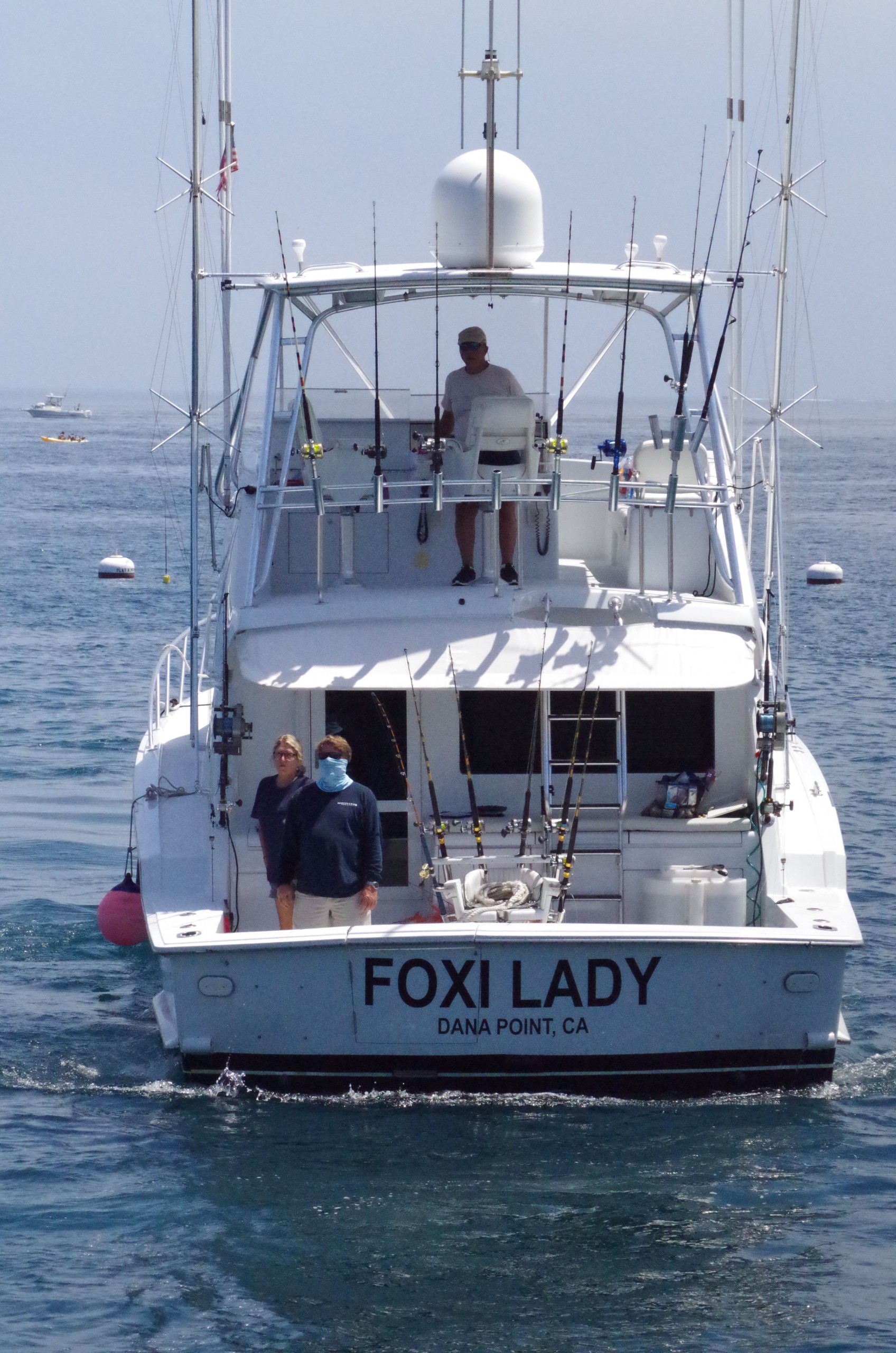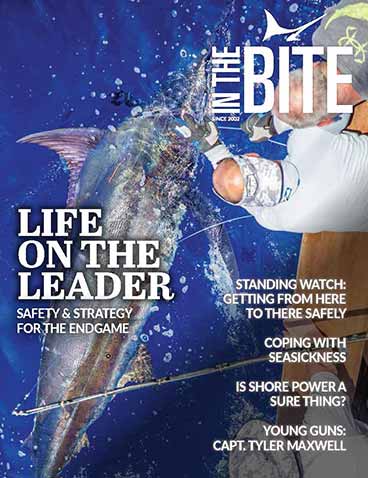When it comes to fishing, Southern California is a kingdom all its own. It boasts the US West Coast only billfish fishery and its richly abundant waters have been attracting anglers since the days of Zane Grey. The physical dynamics of the oceans and current in many ways define the approach of the anglers and captains who ply its waters. The culture of fishing runs deep”what happened here in the formative days of sportfishing was, in its time, as impactful and profound as any place in the United States. It is these factors that produce captains with a skillset and perspective all their own. This is the story of the California Captain. Understanding the amalgam of variables that defines their environment is the first step to determine how and why members of their ranks are increasingly prominent in the winner circle of marlin tournaments far beyond their homeports.
The Physical Setting
In terms of geographical location, Southern California sits at roughly the same longitude as coastal Georgia and South Carolina. In terms of water temperature and seasonality of its fisheries, Southern California shares more in common with southern New England”each sits at the edge of billfish habitat. What accounts for the mismatch between longitude and water temperature? The East Coast is coursed by warm northerly flowing currents that transport water from the Earth equator. The Gulf Stream is the dominant force in fisheries across the East Coast”from Florida to Maine. It then juts across the Atlantic Ocean toward the British Isles.
The California Current
The California Current originates from the North Pacific Current as it spins off of the Subpolar Gyro. The effect of this cold-water transport is evident in everything from the fishing to the weather to popular culture. Cold water also defines the distribution and seasonality Southern California pelagic fisheries. Water temperature is one of the main determinants of where you can find billfish. During warm weather months there is a striped marlin fishery that varies quite a bit year to year. In El Niño years, when water of the Pacific are warmer than other years, there will be more striped marlin and even a scattering of blue marlin and wahoo in Southern California. No matter how you slice it, however, Southern California waters lie largely within the extremes of desirable habitat for marlin. This is an important fact when considering the makeup of a California captain. To catch swordfish or striped marlin in Southern California, however, requires a unique skillset.

Three boats, from left to right, that define the California fishing landscape as well as any: the sport boat, the Pacifica, and the swordfish harpoon boat
A Culture of Watermen (Lots and Lots of Watermen)
California is the most populous state in America. Its beautiful beaches, rich farmland and hospitable climate have been attracting people to the state for years. Three factors come into play when considering how the demographics of southern California influence the development of the California captain. The first: people of California really enjoy the ocean. The second: there an awful lot of people in California. The third: when it comes to marlin and tuna, the fishable zone of southern California is compressed. For the purposes of this article, we assume the fishable area to be roughly 170 miles”from about Oxnard to the Mexican border. By some estimates, the population of South-ern California was some 24.12 million people in 2018. This is roughly the same as the populations of all of North Carolina (10.38 million), South Carolina (5.08 million), and Georgia (10.52 million) combined. The net effect of the three variables is simple: there are lots and lots of people trying to catch a relatively small body of fish that is available in a relatively small area for a relatively short amount of time.

Captain Greg DiStefano and El Suertudo owner, Guy Yocom
Captain Creation
While access to regular shots at billfish might be limited for the majority of the anglers and crews in Southern California, the waters are home to a diverse variety of fisheries and a thriving fishing culture. Gary Graham grew up fishing in Southern California and has been a fixture on the scene for decades. Graham describes a culture of fishing that remains largely the same as it was 30 or 40 years ago. Kids that are skilled and grow up learning how to fish are introduced to a network and really taken care of, Graham begins. Like many others, Graham introduction to fishing came from his father. My father fished with a window washer who worked from 5am to 1pm every day. Hed then fish in the afternoons. The culture really has not changed much. These guys were experts fishing the kelp beds and they taught me how to fish, Graham says. In Southern California, a lot of the guys who have evolved with a spark for sportfishing”those who are dedicated”have had the opportunity to capitalize on their passion and become the greatest captains here currently.
The Sport Boat
The sport boats of California exert unique influence over the fishing traditions of California. Known as head boats or party boats in other places, the California sport boat brings dozens of people out fishing for a variety of species. From same day and overnight trips targeting white sea bass and calico bass to the long range, multiday tuna and wahoo trips the sport boat is a California institution. Many a California Captain can trace his fishing lineage to this point of entry. Captain Dave Hansen runs the Wild In Sac, a 65-foot Hatteras, and operates yoursaltwaterguide.com”a website that provides access and information on all things fishing in Southern California. He came by a life in fishing honestly. I started fishing with dad at three years old and knew from eight or nine that I wanted to be a captain. He came up through the ranks and began running a sportboat by the age of 20.
Gaining Experience
When asked how the sportboat background prepared him for running a sportfisher, Hansen paints a clear picture. There are lots of ˜microwave captains with one skillset. Im not an expert at anything but am good at lots of things. Catching fish for 60 or 70 people is quite a bit different than catching fish for one or two. Conditions change daily, clientele changes daily”availability of bait dictates what you can do, Hansen explains. Sportboats give many would-be crewmen their start on the water. Colin Sarfeh, director of marketing at Pelagic Gear, grew up fishing on these boats and understands their impact shaping the fishing scene in Southern California. A lot of guys get their start by pinheading from a young age. Each port has a handful of these guys, Sarfeh says. They are introduced to the sportfishing scene and integrated into a network that produces captains and tournament winners.

The fishing landscape in Southern California
The Resulting Skillset: The California Captain
The California billfish and tuna scene is defined by a relative scarcity of shots, quite a bit of fishing pressure, and an established network of passionate fishermen. To regularly produce fish within this landscape requires a finely tuned skillset. Captain Evan Salvay provides context. Success here requires you to be good at hunting, breaking down large stretches of water. It requires that you effectively maximize use of your electronics and equipment. In many ways, we have a limited entry season here. You have to fish hard and be prepared. There lots of pressure and to be successful you must be technically competent, Salvay relays thoughtfully. The fishery rewards technical proficiency.
On Top of the Game
Longtime California headliner Captain Jim Kingsmill provides further perspective. A policeman for 30 years, Kingsmill learned fishing from commercial guys. The fishery is totally different in California. Sight fishing is so different. There is no consistency in current and it hard to pinpoint where fish will be. Success requires following signs that will lead to fish”things like knowing which birds are associated with different fish. Then there is the availability of live bait, which changes through the years, Kingsmill explains. When you leave the harbor, youre fishing in three miles. There is a three- to 60-mile band, the fish can be anywhere. Youre always looking, your head is always on a swivel. In other places you have a long run to the fishing”when you pick up and run, youre not missing anything.
The Technique
Throughout most of the world, marlin are hooked behind the boat while trolling. In California, the striped marlin and swordfish are targeted by slinging a live bait to tailers or sleepers from the bow. California captains get very few shots from the back of the boat. This defines much of their perspective and skillset. One of the things, in my opinion, that different for the west coast captain is that sight fishing is so important,” says Captain Greg DiStefano. “You are locked into binoculars all day working for a few shots. There are very few opportunities here”the more youre in the gyros the more fish youll see. Training yourself how to look and how to pay attention is huge.” When asked how a background in the California fishing scene translates to fishing other places, DiStefano points to a direct benefit. It makes you pay attention to the water around you, not just to the boat. Where guys from other places might pick up and run, this background helps you to pick up the binoculars and look.

Live bait is as central to California offshore fishing as dead ballyhoo are to the East Coast
California Perspective
Captain Pete Wishneyis the owner/operator of the Foxi Lady, a Hatteras based out of Dana Point, California. An all around awesome and hilarious guy, Wishney never met a fishing adventure that he didnt like. Due to his travels, Wishney well understands how a California fishing background can prepare you for fishing in other places. Southern California is much more live bait oriented than other places. Reading the water”the bird life and the color are very important here, he begins. This solid understanding of the importance bait and the ability to read the water translates to other places. There the old truism, ˜Where there bait, there fish. In California you look for little white terns. When they start fluttering (as opposed to flying), dont wait to see fish, just throw your bait in. That idea translates very well to Venezuela in April and May when the blues show up. If there a frigate around, just wait for him¦
Fishing Evolution
Captain Peter Groesbeck personifies the skillset that results from integrating a California fishing background into skills picked up elsewhere. Groesbeck father had a 40-foot Wheeler in the 50s”his father caught his first marlin in 1956 out of San Diego. In the early 70s, Groesbeck brother bought a sportboat called the Prowler”Groesbeck fished aboard it quite a bit. This body of experience augmented quite a bit of time crewing on stick boats for swordfish. The first time Groesbeck went to Cabo San Lucas was 1970”and he been traveling there ever since. Groesbeck was part of the Bad Company fishing team for many years and ran a mothership/gameboat operation that spanned the Pacific in the mid-1980s. In the early days in California from May through October, there were lots of albacore, marlin, tuna and swordfish. From October through April, wed head to Cabo. Wed spend some time in the boat yard then wed do it again. In Mag Bay wed get lots of shots. This elevated the fishery in California. We started to inputting some of the East Coast guys to get better out of the back of the boat”using ballyhoo and dredges, and the like, Groesbeck says of the evolution. The result of the integration produces a sort of best practice. Some times we run and gun, sometimes we troll. You just cant be one dimensional.”

Captain Pete Wishney and the Foxi Lady on California’s coast
Captain Steve Lassley: The Essential California Captain
In many ways Captain Steve Lassley embodies the essence of the California Captain. In addition to a pile of tournament and sportfishing accolades, Lassley spent 30 years as a commercial swordfishermen in California. Read more…












